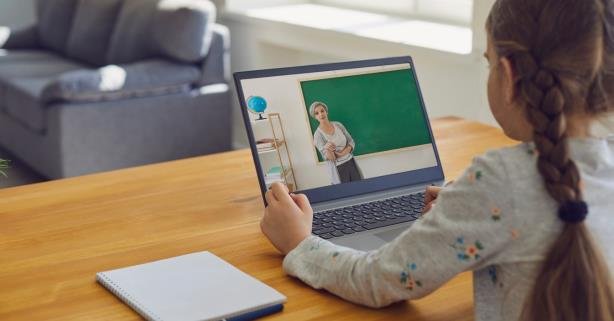Parents and students today face a challenging decision when choosing between different educational approaches. With technology reshaping how we learn, many wonder whether digital methods can truly replace traditional classroom experiences.
Studies show online learning has an average retention rate of 60%, compared to 10–15% in traditional classroom settings. This striking difference highlights just how much educational delivery has evolved.
Whether you’re a parent seeking extra support for your child or a student looking to supplement your education, understanding these distinct learning methods can help you make the right choice for your specific needs.
Understanding the Core Differences
The fundamental differences between online tutoring and classroom go far beyond just location. Each approach creates entirely different learning environments that affect how students absorb and retain information.
Learning Environment and Structure
Online tutoring typically happens in familiar spaces like your home, creating a comfortable atmosphere where students can focus without the distractions of a busy classroom. There’s no need to worry about what other students might think, and learners can ask questions freely without feeling self-conscious. In Canada, many families turn to TutorLyft online tutoring Canada for this kind of supportive and flexible experience, as the platform connects students with expert tutors who personalize lessons to match each learner’s pace and goals.
Traditional classroom learning, on the other hand, follows a more structured approach with set schedules, physical attendance, and group dynamics. Students must adapt to the teacher’s pace and the classroom’s energy, which can be either motivating or overwhelming depending on the individual.
When you’re considering tutoring online, you’ll find that sessions can be scheduled around your family’s routine. This flexibility means no rushing through traffic or rearranging work schedules just to get to a tutoring center.
Interaction and Communication Styles
The way students and teachers connect differs significantly between these two methods. Online platforms rely heavily on video calls, chat functions, and digital whiteboards to facilitate communication. While this might seem less personal initially, many students open up more when they’re in their own space.
Classroom learning thrives on face-to-face interaction, body language, and immediate feedback. Teachers can quickly gauge student understanding through visual cues and adjust their teaching style accordingly. This direct connection often helps build stronger relationships between educators and learners.
However, online tutoring offers unique advantages like screen sharing, where students can work through problems together in real time. The digital tools available today make remote interaction surprisingly effective and engaging.
Key Benefits of Online Tutoring
The advantages of digital learning extend well beyond convenience, offering students opportunities that traditional settings simply can’t match.
Flexibility and Convenience
The most obvious benefits of online tutoring include the ability to learn from anywhere with an internet connection. Students don’t waste time commuting, and parents don’t need to coordinate complex pickup and drop-off schedules. This convenience factor alone has convinced many families to make the switch.
Online sessions can be easily rescheduled when conflicts arise, and students can access recorded sessions to review difficult concepts. This flexibility is particularly valuable for busy families juggling work, sports, and other commitments.
Many online platforms also offer 24/7 access to resources, allowing students to continue learning even when their tutor isn’t available. This round-the-clock support can be crucial during exam periods or when working on challenging assignments.
Personalized Learning Experience
Online tutoring excels at creating truly individualized learning experiences. Without the constraints of a physical classroom, tutors can tailor their approach to each student’s unique learning style. Visual learners might benefit from enhanced screen-sharing capabilities, while auditory learners can focus on discussion-based sessions.
The one-on-one nature of most online tutoring sessions means students receive undivided attention throughout the entire session. There’s no competition with other students for the teacher’s time, and lessons can move at exactly the right pace for each individual.
Digital platforms often include built-in assessment tools that track progress over time, helping both tutors and students identify areas that need additional focus. This data-driven approach to learning can be more precise than traditional classroom methods.
Classroom Learning Advantages
Despite the rise of digital education, traditional classroom settings continue to offer unique benefits that resonate with many learners.
Social Interaction and Community
Classroom learning creates natural opportunities for peer interaction and collaborative learning. Students can work together on group projects, participate in discussions, and learn from each other’s perspectives. These social connections often extend beyond academics, creating lasting friendships and support networks.
The energy of a classroom can be infectious, with enthusiastic students motivating others to participate and engage. This group dynamic is particularly effective for students who thrive on social interaction and friendly competition.
Teachers in traditional settings can also facilitate group activities and discussions that would be challenging to replicate in an online environment. The spontaneous conversations and collaborative problem-solving that occur naturally in classrooms are difficult to recreate virtually.
Structured Learning Environment
Many students perform better with the clear structure and routine that classroom learning provides. The physical act of going to a specific location for learning helps create mental boundaries between study time and leisure time.
Traditional classrooms offer fewer technological distractions, helping students focus entirely on the lesson at hand. Without the temptation of other websites, social media, or household interruptions, students can maintain better concentration.
The immediate accountability of being physically present also helps some students stay engaged and motivated. It’s harder to multitask or lose focus when you’re sitting directly in front of your teacher.
Comparing Learning Outcomes
Understanding how these different approaches affect actual learning results can help you make an informed decision about which method might work best.
Retention Rates and Engagement
While online learning shows impressive retention statistics overall, the reality is more nuanced when you dig deeper. Virtual education vs traditional education outcomes vary significantly based on the student’s age, learning style, and motivation level.
Younger students often struggle with the self-discipline required for online learning, while older students and working professionals tend to excel in digital environments. The key is matching the learning method to the individual student’s needs and circumstances.
Online platforms can provide immediate feedback and adaptive learning paths that adjust to each student’s progress. This personalization often leads to better outcomes than traditional one-size-fits-all classroom approaches.
Subject-Specific Considerations
Certain subjects naturally lend themselves better to online or classroom delivery. Math and language arts often work well in digital formats, where students can work through problems step-by-step with their tutor.
Science subjects that require hands-on experiments or lab work might be more challenging to teach effectively online, though creative tutors have found ways to adapt using virtual simulations and at-home experiment kits.
The effectiveness of each method also depends on the student’s familiarity with technology and their comfort level with digital tools. Some students thrive with interactive online resources, while others prefer traditional textbooks and face-to-face explanations.
Your Questions About Online vs. Classroom Learning
What is the difference between online tutoring and in-person tutoring?
Choosing between online tutoring and in-person tutoring depends on your child’s learning preferences and your family’s schedule. Some students thrive in the structure of an in-person setting. Others enjoy the convenience and comfort of learning from home. For many, blending both formats is the most effective solution.
Can online tutoring be as effective as classroom learning?
Online tutoring can be highly effective, especially for motivated students who appreciate personalized attention and flexible scheduling. Success depends on factors like the student’s learning style, the tutor’s experience with digital tools, and the quality of the online platform being used.
What technology do I need for online tutoring sessions?
Most online tutoring requires just a computer or tablet with a stable internet connection, webcam, and microphone. Some platforms may recommend specific software or apps, but most are user-friendly and don’t require advanced technical skills to use effectively.
Making the Right Choice for Your Learning Journey
Both online tutoring and classroom learning have their place in today’s educational landscape. The best choice depends on your circumstances, learning preferences, and goals. Some families find that a hybrid approach works best, combining the convenience of online sessions with occasional in-person meetings for subjects that benefit from hands-on interaction.
The most important factor isn’t whether you choose digital or traditional methods, but rather finding an approach that keeps you engaged and motivated to learn. After all, the best educational method is simply the one that works for you.






